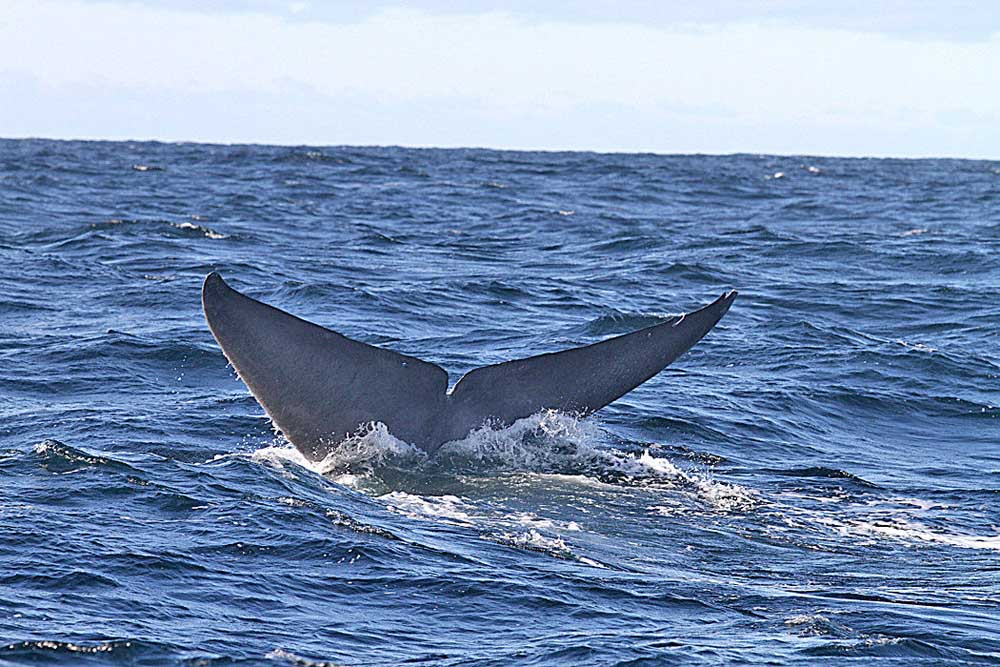State safeguards for large whales and weasel up for review
Published 9:10 am Wednesday, May 31, 2017

- A newly published study found blue whales rely on memory to return to places where they have found good food sources in the past. These may include waters above deep undersea canyons off the Washington coast.
OLYMPIA — State wildlife managers want citizen opinions on whether to continue endangered species protection for large whales sometimes present in the ocean off Pacific County.
Trending
In addition, the Washington Department of Fish and Wildlife is seeking input on protections for fishers, a mid-sized member of the weasel family that once lived in the coniferous forests of Washington. The species was eliminated from the state in the late 1800s and early 1900s, mainly as a result of trapping. Reintroduction efforts have met with some success since 2008. There was a possible sighting of one in Pacific County last year.
Blue, fin, sei, North Pacific right and sperm whales have been listed as endangered species in Washington since 1981. Populations of all five species greatly declined in the 1800s and 1900s from being severely overharvested by whalers.
Blue whales, believed to be the largest animals to ever exist on earth, are now regularly present off the outer Washington coast. According to a draft report issued this month by WDFW, acoustic monitoring for the distinctive sounds they make shows blue whales can occur off Washington during all months of the year. In 2011, a group of blue whale was observed feeding in the waters above deep ocean canyons off the coast of Pacific and Grays Harbor counties.
Trending
Blue whales off Washington belong to the Eastern North Pacific stock, which migrates between northern summer feeding locations and wintering areas off western Mexico and Central America. “Current stock size is about 1,600 whales and remains below the estimated historical stock size of 2,200 individuals,” WDFW reported. “Stock trend is possibly stable.”
Fin whales, the second-largest species of whale, also are present off Washington’s outer coast most of the year, according to acoustic monitoring. At least part of the North Pacific population is migratory, with more whales present offshore in summer months, WDFW said.
Sperm whales are the largest species of toothed whale. “Sperm whales chiefly inhabit deep oceanic waters, approaching land mainly where shelf edges and submarine canyons exist near coasts, although males regularly venture into shallower waters in some locations. All Washington records are from off the outer coast,” WDFW reported.
Three satellite-tagged males in 2014 moved from Southeast Alaska to Mexico following a route that took them along or near the continental shelf slope of Washington. Acoustic detections indicate that sperm whales can occur off Washington during all months.
Sei and North Pacific right whales are less commonly observed in Washington waters.
The draft reviews for these species are available online at wdfw.wa.gov/conservation/endangered/status_review/.
Written comments on the reviews and recommendations can be submitted via email to TandEpubliccom@dfw.wa.gov or by mail to Hannah Anderson, Washington Department of Fish and Wildlife, 600 Capitol Way N., Olympia, WA 98501-1091.
WDFW staff members are tentatively scheduled to discuss the reviews and recommendations with the Washington Fish and Wildlife Commission at its September 2017 meeting. The commission is a citizen panel appointed by the governor to set policy for WDFW. For meeting dates and times, check the commission webpage at wdfw.wa.gov/commission.









